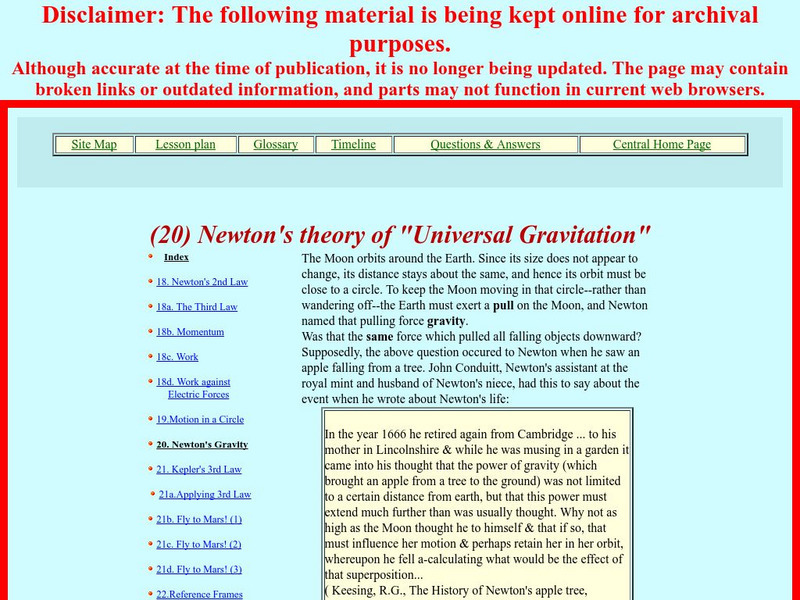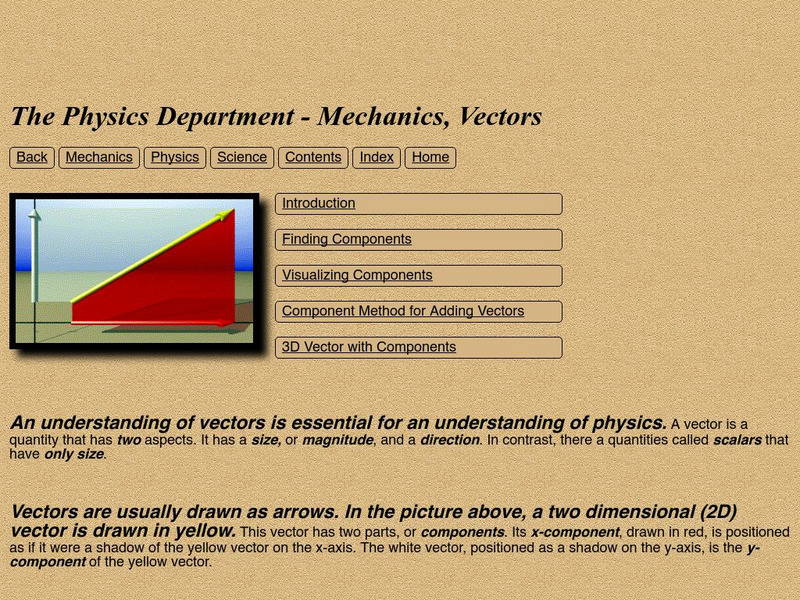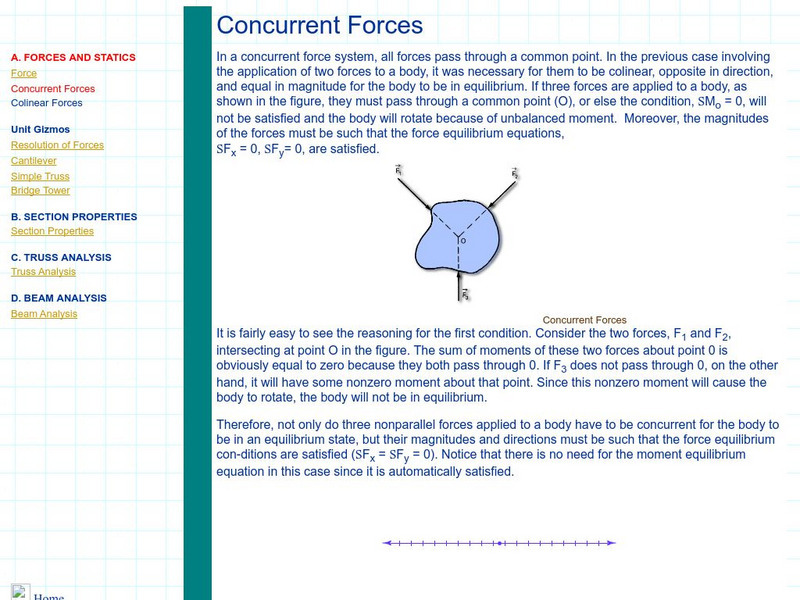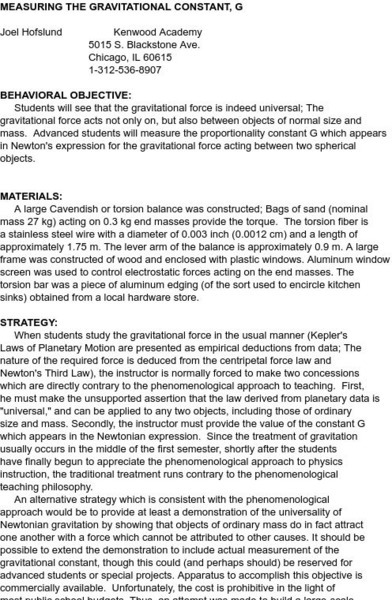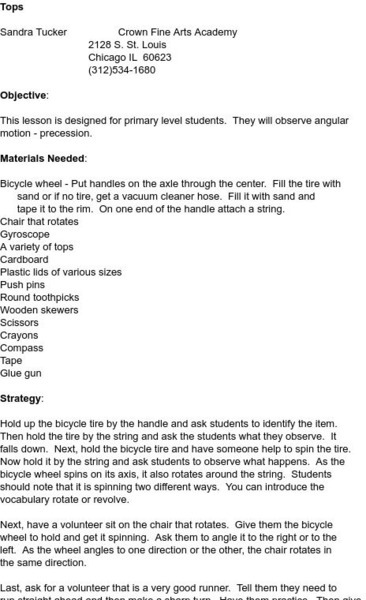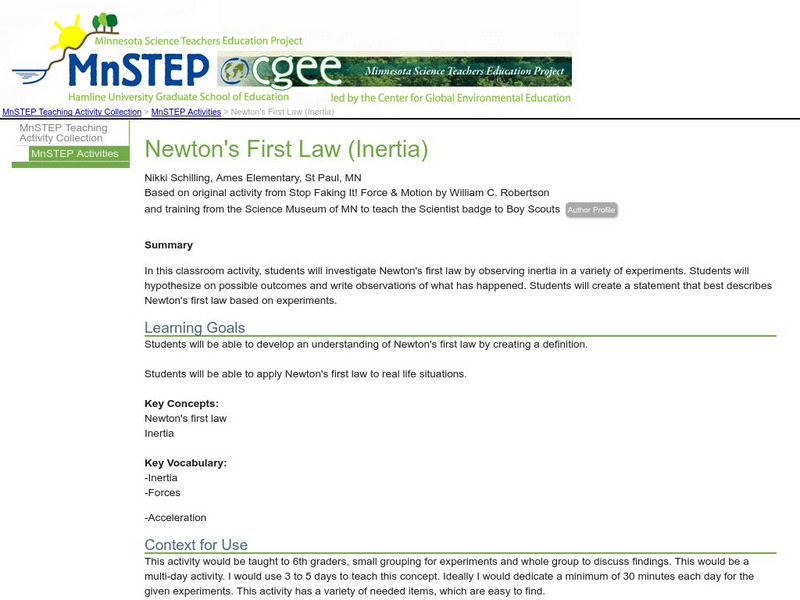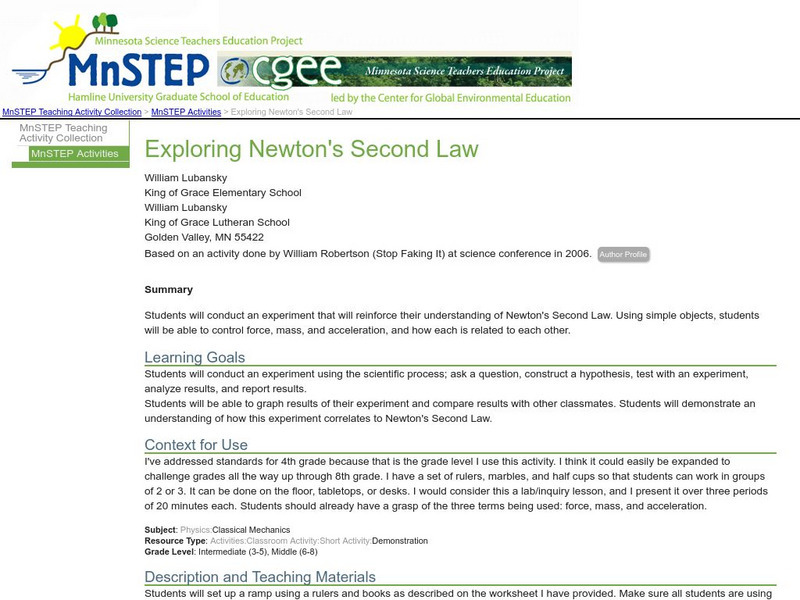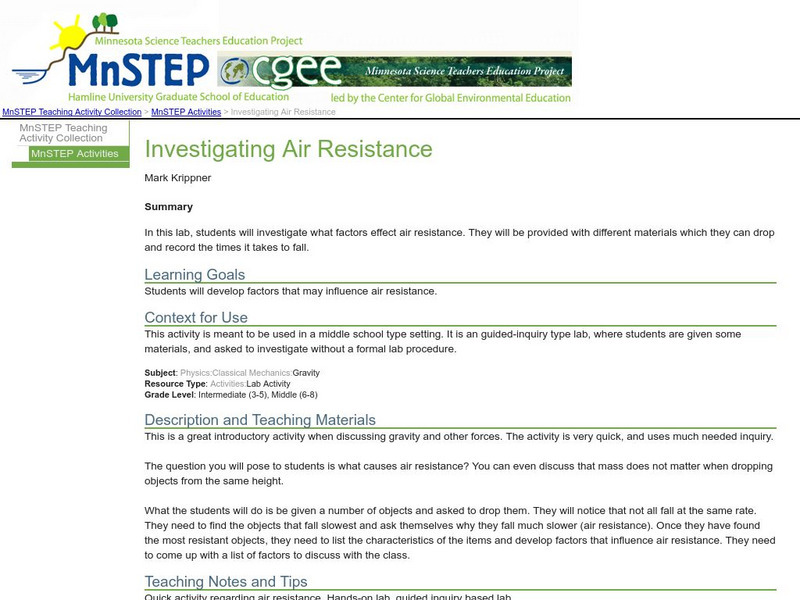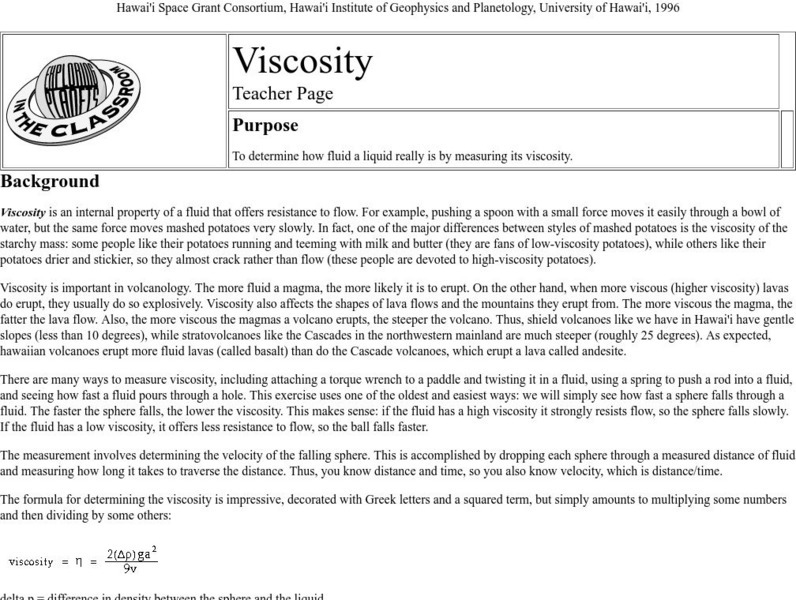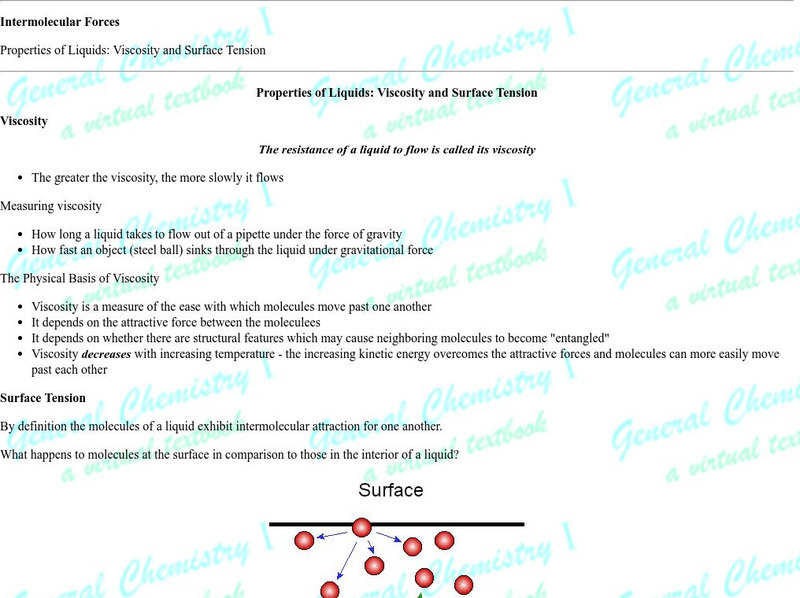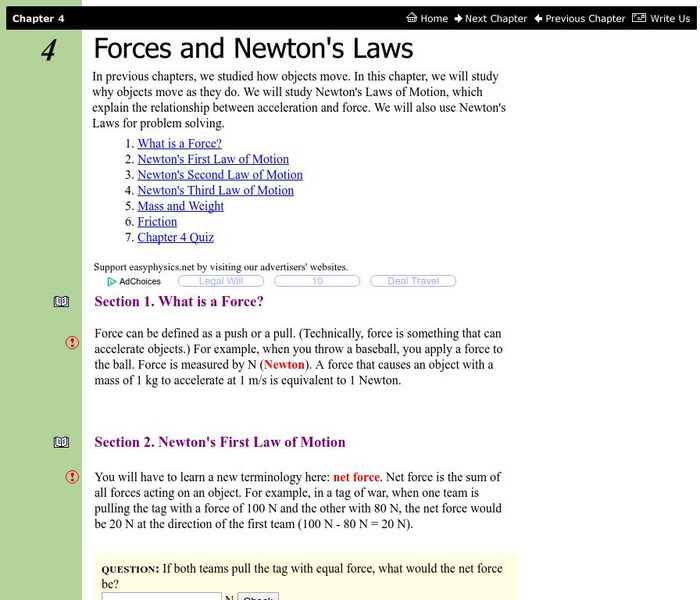Science Buddies
Science Buddies: Learning the Scientific Method With Paper Rockets
Learn about the scientific method in this activity that uses rockets made from nothing but paper, tape, and straws.
Massachusetts Institute of Technology
Mit: Open Course Ware: Forces: Current Carrying Wires in Magnetic Fields
Learners investigate current-carrying wires in magnetic fields. Some topics explored in the activities are forces, magnetic dipoles, and circuits. The resource consists of video clips, lecture notes, exam questions, java applets, and...
NASA
Nasa: Newton's Theory of "Universal Gravitation"
This site, which is provided for by NASA, discusses the thinking which led Newton to understand universal gravitation.
Curated OER
Zona Land: Components of a Vector
An interactive Java applet where users can rotate a vector about its tail and view the components of that vector. Magnitude of the components is updated on screen as the vector is dragged.
Curated OER
Zona Land: Mechanics and Vectors
An exceptional tutorial on the topic of vectors that offers many helpful graphics, some of which are interactive.
Texas Instruments
Texas Instruments: Forces
This activity is designed to assess the comprehension of concepts related to various forces.
Science and Mathematics Initiative for Learning Enhancement (SMILE)
Smile: Concurrent Forces
University site explaining what is meant by concurrent forces. The site has a free-body diagram with 3 forces acting on an arbitrary body. The site explains the conditions necessary for concurrency.
Science and Mathematics Initiative for Learning Enhancement (SMILE)
Smile: Measuring the Gravitational Constant, G
A demonstration/lab idea for determining the numerical value of the universal gravitation constant using a torsion balance.
Science and Mathematics Initiative for Learning Enhancement (SMILE)
Smile: Lab Activity: Tops
The Illinois Institute of Technology provides a lab activity on precession and spinning tops. Designed for primary grades, but easily adapted for any level. Includes directions and assessment ideas.
Science Education Resource Center at Carleton College
Serc: Investigating Projectile Motion: Predicting Point of Impact
Students discuss forces acting on objects in a trajectory motion. They review notes, study equations, solve projectile motion problems, and determine experimentally the impact point of a ball in projectile motion.
Science Education Resource Center at Carleton College
Serc: Newton's First Law (Inertia)
This activity provides students an opportunity to investigate Newton's first law by observing inertia in a variety of experiments. Students will hypothesize on possible outcomes, write observations of what has happened, and apply...
Science Education Resource Center at Carleton College
Serc: Exploring Newton's Second Law
Students conduct an experiment that will reinforce their understanding of Newton's Second Law. Using simple objects, students control force, mass, and acceleration, and how each is related to each other.
Science Education Resource Center at Carleton College
Serc: Investigating Air Resistance
In this lab, students will investigate what factors affect air resistance while introducing gravity and other forces.
Science Education Resource Center at Carleton College
Serc: Introduction to Torques: A Question of Balance
Learners will be introduced to torques and their importance in static balance.
TryEngineering
Try Engineering: A Question of Balance
Students work in teams to fill jars with a product that is uniform in weight or count. Lesson investigates how manufacturing engineers use weight scales and measurement to develop systems that can create consistent products.
TryEngineering
Try Engineering: Simple Kitchen Machines
Team lesson focuses on the different types of simple machines, how they work, and how they can be found in daily life.
TryEngineering
Try Engineering: Tinkering With Tops
Lesson explores the history, design, and motion of spinning tops. Student teams design and build their own tops that can spin for at least 10 seconds within a circle 30 centimeters in diameter.
TryEngineering
Try Engineering: Chair Lift Challenge
Lesson investigates how engineers develop safe transportation systems to operate in a variety of climates and environments. Teams of learners work together to construct a "chair lift" made from everyday materials as a test of this...
TryEngineering
Try Engineering: Engineered Sports
Students work in teams to investigate how aerospace engineering relates to sports, especially golf ball design and the physics of bounce. They use this information to determine whether these aerospace principles can be applied to...
University of Hawai'i
The Hawai`i Space Grant Consortium: Viscosity
This site provides a detailed overview of viscosity, focusing on why viscosity is so important to learn and understand. Content includes the formula for determining the viscosity of a liquid, as well as a break-down of the viscosities of...
Wikimedia
Wikipedia: Mechanical Equilibrium
Wikipedia provides information on mechanical equilibrium, the state of a mechanical system in which the sum of the forces on each particle of the system is zero.
Michael Blaber, PhD
Fsu: Properties of Liquids: Viscosity and Surface Tension
This article from the Florida State University provides a basic definition of viscosity and it origin in liquids.
Math Science Nucleus
I. Science Ma Te: Integrating Science, Math and Technology
This site offers a wealth of online textbook-related materials that encourage the discovery of science in the world around us. Enter the site to access material on specific topics. Each section contains reading material (complete with...
Other
Easyphysics: Chapter 4 Forces
Learners investigate forces and Newton's laws. Some topics examined are mass, friction, and Newton?s laws of motion. The resource includes example problems with solutions and a chapter quiz.




